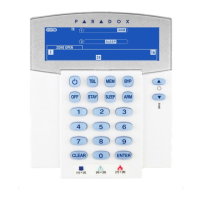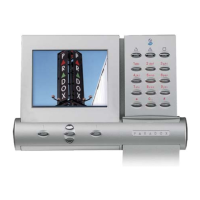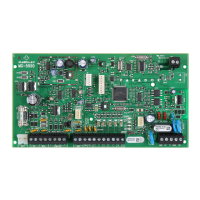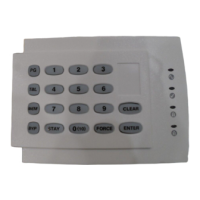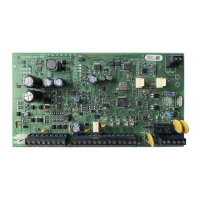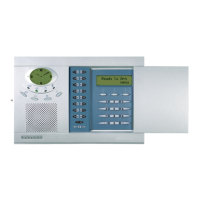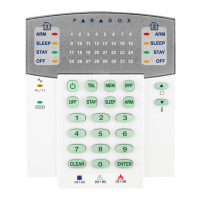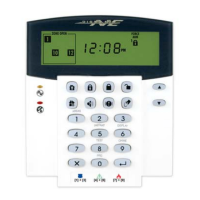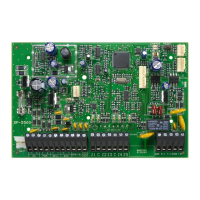Do you have a question about the Paradox K10LEDVH and is the answer not in the manual?
| Type | Wired Keypad |
|---|---|
| Keypad Type | LED |
| Display | LED |
| Voltage | 12 VDC |
| Compatibility | Paradox security systems |
| Operating Temperature | 0°C to 50°C |
| Humidity | 5% - 90% RH |
The primary code for system administration and user management.
Partition-specific codes for managing users within their assigned partitions.
A code that triggers a silent alarm when used to arm or disarm the system.
Discussion on the security implications of 4-digit versus 6-digit user codes.
Step-by-step guide to add or change user codes and their settings.
Procedure for removing user codes from the system.
Instructions for configuring the system's internal clock.
How to enable chime notifications for specific zones.
Method to view and understand system trouble conditions.
Explanation of audible beeps and visual indicators used by keypads.
How to adjust keypad sound and backlight illumination levels.
Description of the K636 keypad layout and key functions.
Description of the K321 keypad layout and key functions.
Description of the K10LEDV/H keypad layout.
Description of the K32LED keypad layout.
Procedure for activating and deactivating the StayD arming mode.
Steps to switch between different arming levels like Sleep and Stay.
Procedures for seamless entry and exit using StayD mode.
How to arm the system normally.
How to arm the system while allowing movement in designated areas.
Feature to open exterior zones without triggering alarms.
How to monitor zone status during an alarm event.
Step-by-step guide to arm the system in Stay mode.
Steps to temporarily deactivate specific zones for arming.
How to restore previously bypassed zone settings.
Features allowing arming without entering a user code.
Allows exiting premises while keeping the system armed.
Setting up the system to arm automatically at scheduled times.
How alarms are shown on the keypad and stored in memory.
Procedure to silence and clear an active alarm.
How to trigger emergency alarms (police, medical, fire) via key presses.
Steps to clear false fire alarms within a specific timeframe.
Information on common fire causes and safety advice.
Guidance on installing smoke detectors for early fire detection.
Procedures for testing system functionality and recommended upkeep.
Using the IP100 module for remote system control and notifications.
Configuring the GSM module to send SMS alerts for system events.
Examples of SMS messages received from the system.
Instructions and procedures for interacting with the VDMP3 voice dialer.
Instructions for interacting with the VDMP3.
Flowchart illustrating the process of calling and operating the VDMP3.
Flowchart showing how the VDMP3 handles incoming calls.
Using PGMs to control external devices based on system events.
Dividing the alarm system into multiple independent zones.
Accessing system features and programming modes via shortcut keys.
Entry point for accessing various programming menus.
Steps to set up user codes, partitions, and access levels.
Configuring entry and exit delay timers for zones.
Setting the system clock and calendar.
Configuring the system for communication with WinLoad software.
Configuring phone and pager numbers for the communicator module.
Sending a status report to the monitoring station.
Setting up automatic arming schedules for partitions.
Adjusting general system settings and features.
Information regarding the warranty terms for the product.
Important considerations and constraints of the alarm system.
Advice on potential issues when using VoIP with the alarm system.
Information on regulatory compliance and user safety.
Details on copyright, patents, and trademark ownership.

